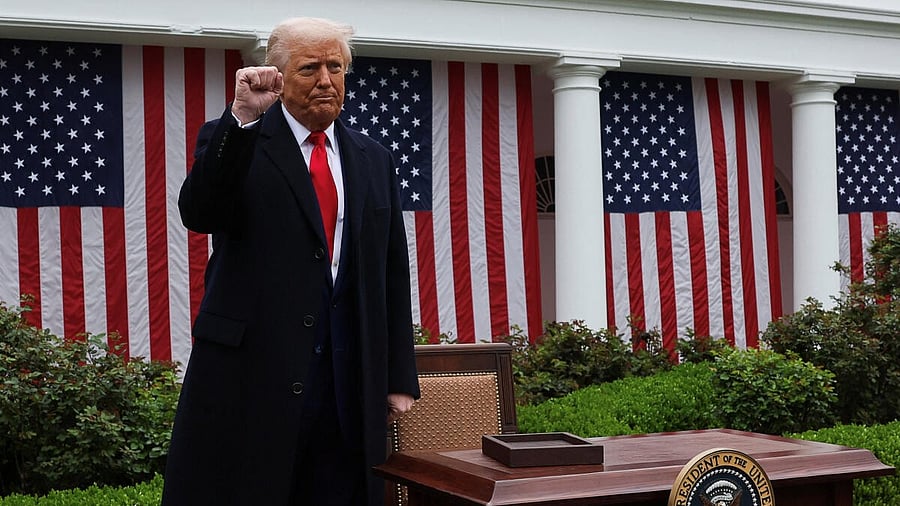
US President Donald Trump
Credit: Reuters Photo
Bengaluru: Upending decades of trade policy, US President Donald Trump announced a 10 per cent baseline tariff on all goods imported into the country and even higher reciprocal tariffs on some of its biggest trading partners, a move that sent shock waves around the world.
Trump has imposed a 27 per cent tariff on India across sectors, except those that have been exempt. This ‘discounted’ tariff is lower than competitors, including China and Vietnam, and south Asian neighbours such as Pakistan, Sri Lanka and Bangladesh (see chart).
The Narendra Modi government came up with a measured response. The Commerce Ministry said it is examining the implications of the unprecedented move and “studying the opportunities that may arise due to this new development” that has raised fears of an all-out global trade war.
“I have declared a national emergency arising from conditions reflected in large and persistent annual US goods trade deficits, which have grown by over 40 per cent in the past 5 years alone, reaching $1.2 trillion in 2024,” Trump said in his address at the White House lawns on Wednesday evening. “This trade deficit reflects asymmetries in trade relationships that have contributed to the atrophy of domestic production capacity, especially that of the US manufacturing and defence-industrial base.”
The sectors exempt from the tariffs include pharmaceuticals, semiconductors, energy and certain minerals not available in the US. For India, which Trump has repeatedly called one of the “worst offenders” of unfair trade practices, export of products such as shrimp, carpet, medical devices and gold jewellery to the US will be impacted.
But exports of electronics, textiles and pharma will get an edge over competitor countries. Exemption of energy from the tariffs would mean that India can continue to export fuels and refined petroleum products to the US.
It should be noted that 25 per cent reciprocal tariffs on steel, aluminum, vehicles and auto components were already announced earlier and hence not covered under the latest announcement.
“The sheer magnitude of what is being proposed now under the new tariff hikes suggests further downside risk to India’s growth forecasts to the tune of 30-50 basis points. However, as a bilateral trade agreement between the US and India materialises, we believe the net impact could be reduced,” said Tanvee Gupta Jain, Chief India Economist at UBS.
Abhishek Kumar, Executive Director, Avener Capital, said that Trump’s move had “rattled global markets”.
But with “key details yet to be disclosed”, he said the full impact remains “uncertain” and preferred a “wait-and-watch approach”. The goods that were exempted from the tariffs make up for just over 25 per cent of the total exports from India to the US.
The 27 per cent tariff on India will be effective from April 9 and would be over and above any existing levy that Indian products entering the US may currently attract.
India’s goods trade surplus with the US was $46 billion in 2024 (1.2 per cent of GDP). Software exports to the US, estimated at around $103 billion in FY24, too would have no tariff impact. Pharma exports at $12.7 billion form almost 14% of total exports to the US.
Engineering goods and specialty chemicals could be worst impacted. For the Indian gems and jewellery sector, already struggling since the last few years, the tariff developments now create an additional adverse impact, with an increased risk of job losses. Gems and jewellery exports stand at $11.5 billion, or almost 13 per cent of all exports to the US.
In textiles, India may have an advantage as its rivals such as Bangladesh, Vietnam, Cambodia, Pakistan, China and Sri Lanka have been slapped with higher tariffs.
The US buys over $36 billion worth of textiles from India, which is around 30 per cent share of India’s exports.
Possible higher defence and oil/gas imports from the US could help the government negotiate a favourable treaty, but pressure to reduce agriculture imports duties may have a political fallout.